Bora Bora might be known best for the aqua blue lagoon, and the over-the-water bungalows, but I was interested in finding out what we might see diving. I was initially very attracted to the prospects of numerous species of shark and rays. Let the fun begin!
Outside the lagoon we dove a couple dives that featured deep blue water, great visibility and an abundance of life. One of these dives was a pleasant drift dive, and another involved mooring above a couple craters just outside the wall the waves broke on. Usually, just after jumping in the water, you would look down and spot 2-3 blacktip reef sharks slowly circling you and the boat. These dives were great fun.
 |
| Here is a large school of what I believe to be Blackfin Barracuda Sphyraena qenie I noticed while descending. |
Blacktip reef sharks Carcharhinus melanopterus were usually all around us, although they rarely got too close.
Grey reef sharks were less common, but one or two routinely showed up on one of the dives.
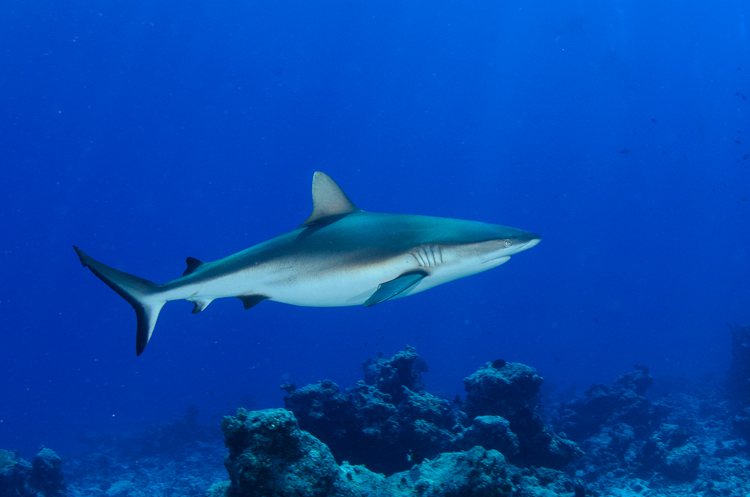 |
| Grey reef shark Carcharhinus amblyrhynchos |
We saw a decent amount of white tip reef sharks, especially solitary animals a few times while diving in the lagoon. They never got close though and I only have a very poor picture of one. I was bummed we missed out on a Bora Bora special, the Lemon Shark Negaprion brevirostris. There is a dive where you can be literally surrounded by dozens of them. Unfortunately, a diver had been pretty tragically bit the day we arrived, so that site was all but closed. Another group saw a solitary lemon on a dive while we were in the water with them, but none of our group noticed. It reportedly stuck around for 10 minutes at the end of the dive and gave great close up looks. I also missed out on tawny nurse sharks. The divemasters reported they were rare, but a guy at our resort said he saw a handful in a short while snorkeling on the other side of our motu in the reef. The day I tried near the end of the trip I got rained out miserably. On our last day, a fisherman looking fellow in a small dingy tied up before we put in to a site and started talking excitedly with our divemasters in French. The French divers on the boat started freaking out, and one finally turned around and said there was a large tiger shark sighted that morning by the man in the boat at this site. They were not excited. I threw on my gear and jumped in quickly with the camera, fingers crossed. Cyril, our divemaster, told me he would pay me for the days dives if we saw one... No tigers were had.
Even with the wide-angle, I spent time trying to photograph some of the fish with limited success.
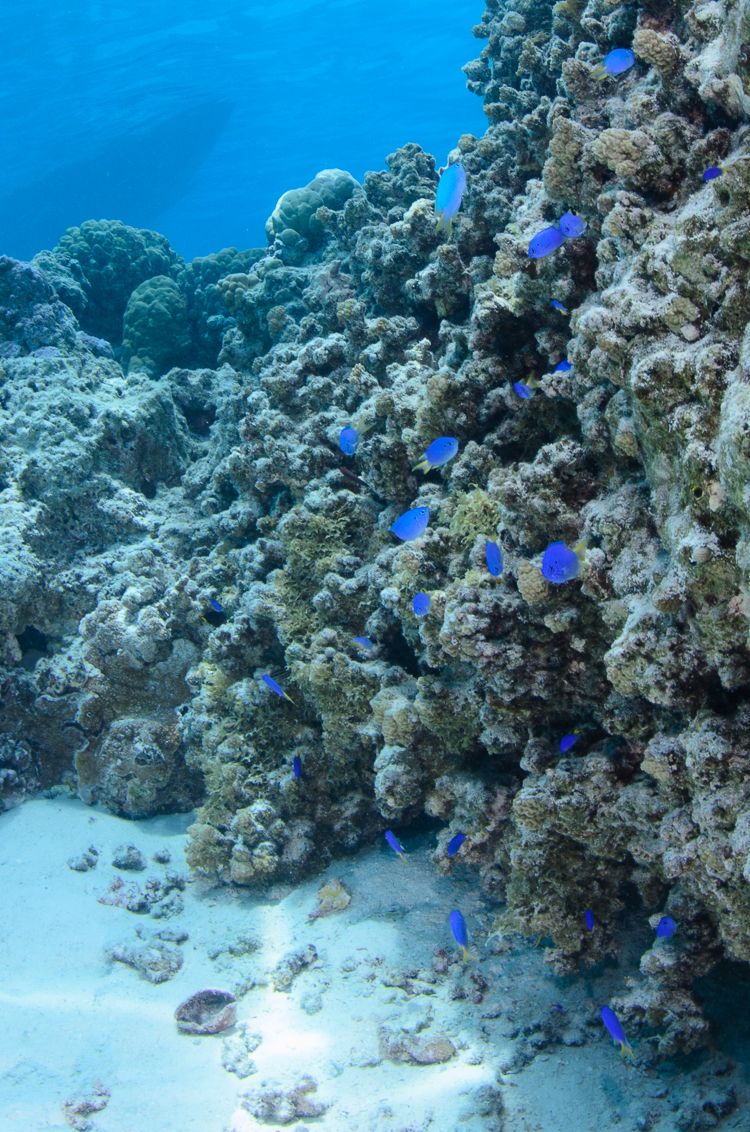 |
| Neon Damsels Pomacentrus coelestis |
I tried to photograph as many fish as possible, but many did not turn out.
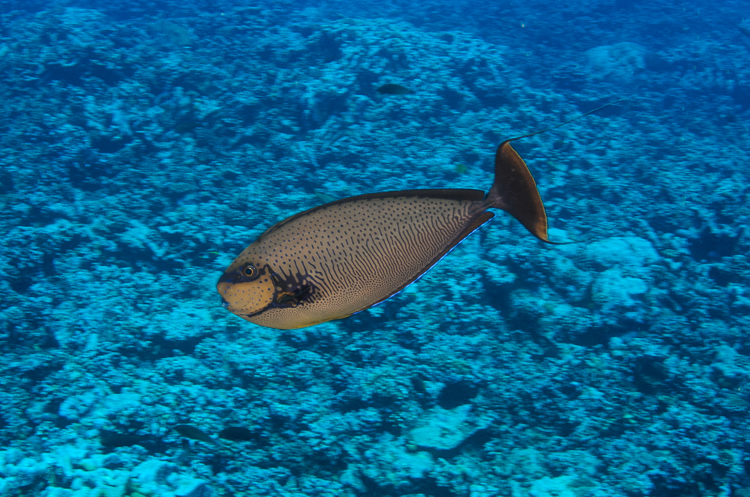 |
| Bignose Unicornfish Naso vlamingii |
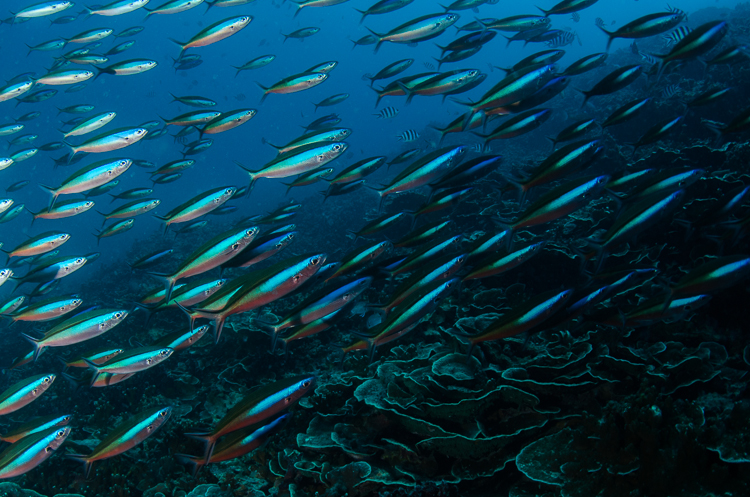 |
| Did I turn my right strobe off here on accident? |
Sometimes, you wish you had your macro port on, but you have to make do with what you have.
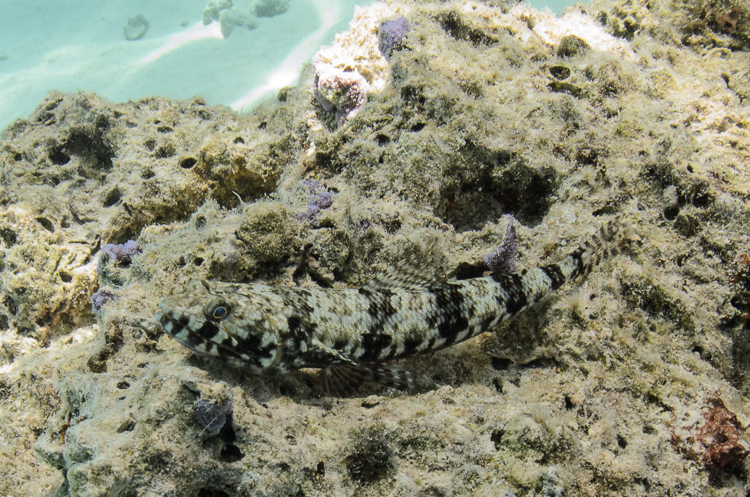 |
| Reef Lizardfish Synodus variegatus |
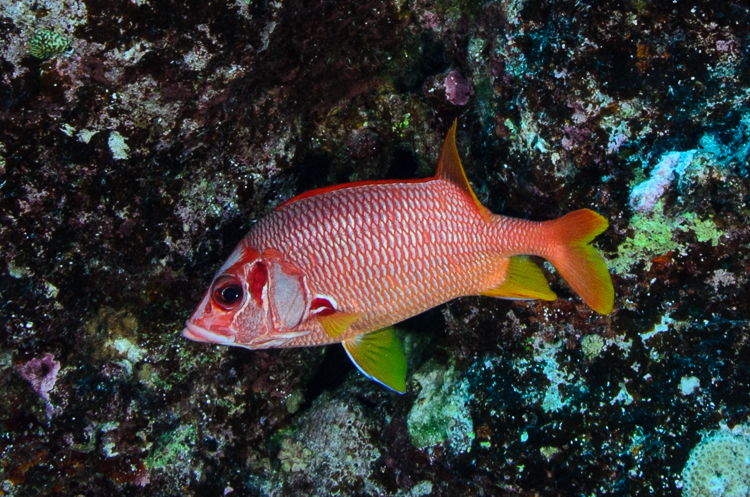 |
| Whitespot Soldierfish Myripristis woodsi |
This was a common site on some of our drift dives.
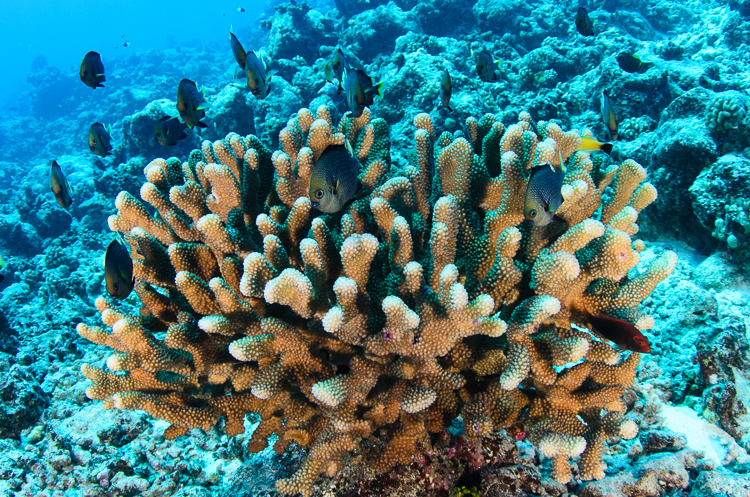 |
| Yellow-tailed Dascyllus Dascyllus flavicaudus |
One dive Cyril found two octopi hanging out on the same coral formation. These were the only ones we would see all trip.
I had found a smaller, lighter colored eel species on our first day while exploring the coral gardens. I never saw it again, but we ended up seeing a ton of large Giant Moray Gymnothorax javanicus. We would usually see a few on each dive.
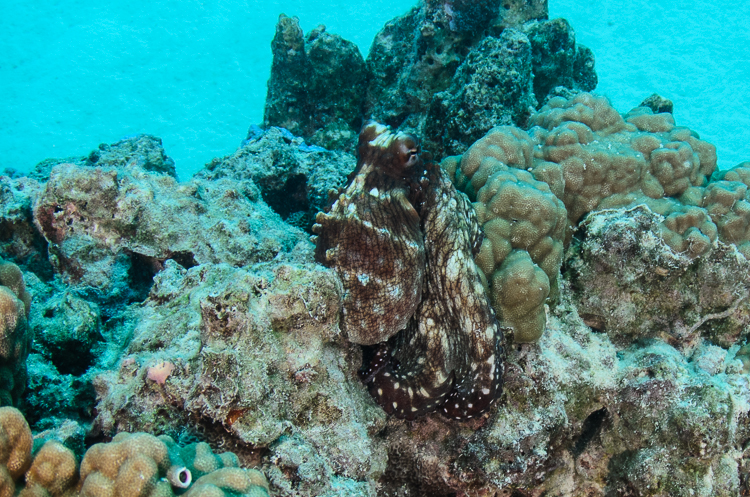 |
| I am unclear of the species. |
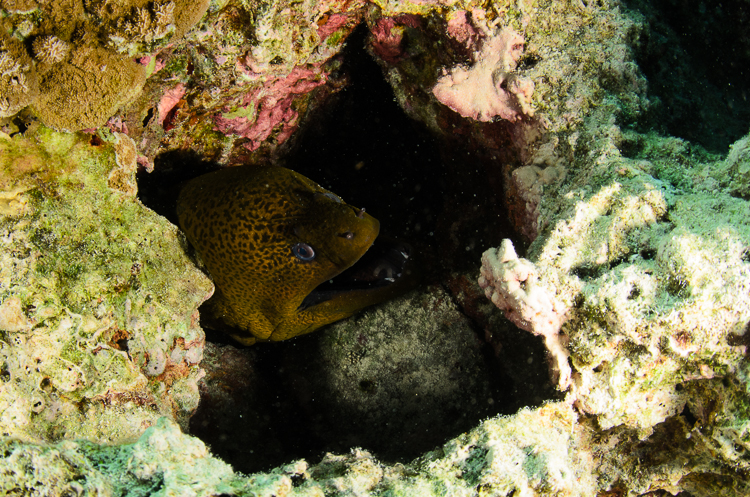 |
| Most tried to hide. |
Many of our dives focused on finding larger wildlife to photograph. At one site, we would drift along sandy bottoms, and then rise up a coral wall, finishing over a shallow reef at the boat. Along the the sandy bottoms usually you could see 15-20 different Spotted Eagle Rays Aetobatus narinari.
I had a hard time photographing these. They were extremely skittish and would turn and run quickly. The plan was to wander into their path slowly and then hug the bottom in the sand and try not to disturb them. Flash ended up spooking them very quickly, so I always shot them in natural light. Twice using these methods an eagle ray cruised a couple feet over top of me. Most turned and fled even when trying to remain innocuous. Most of the time, this is what you would see.
Which really left just one other large animal. When researching Bora Bora I had the lagoon had some cleaning stations that almost year round would attract an animal I have wanted to see for as long as I can remember...
The first time diving the site we struck out. Here we are on the second dive, just waiting patiently...
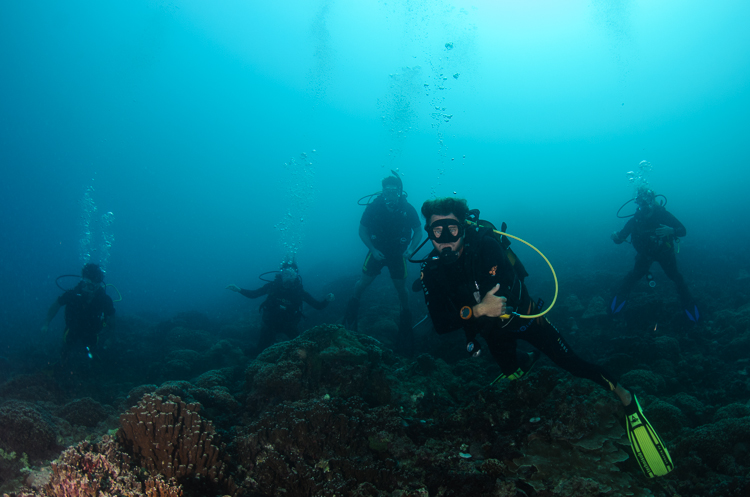
A large shape coming out of the gloom.
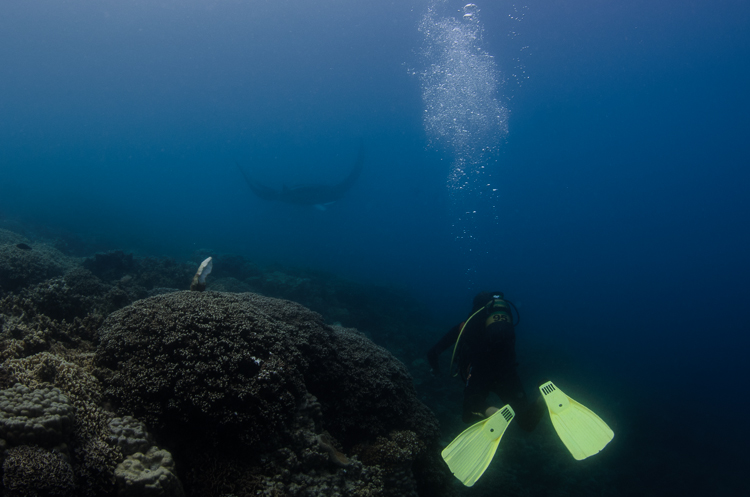
Manta Rays!
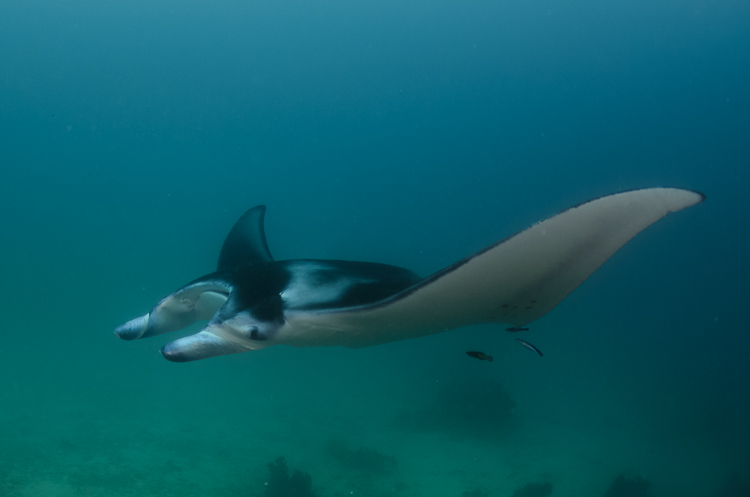
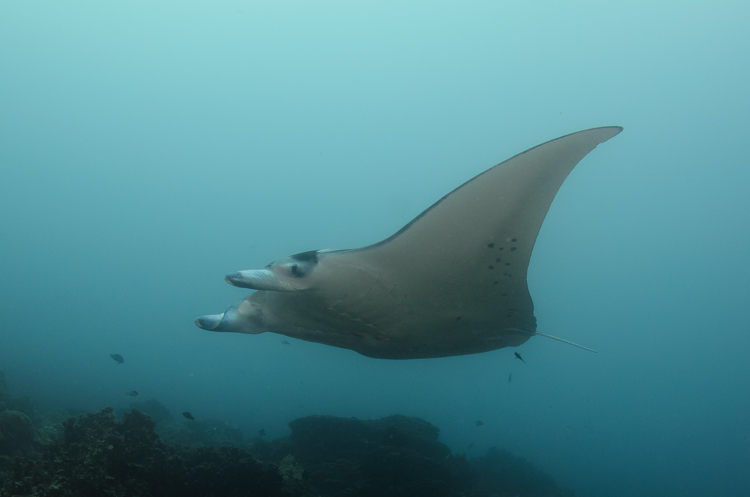
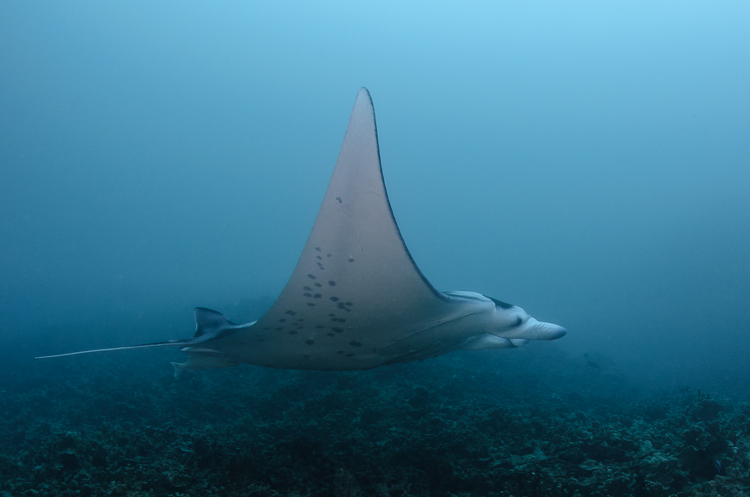
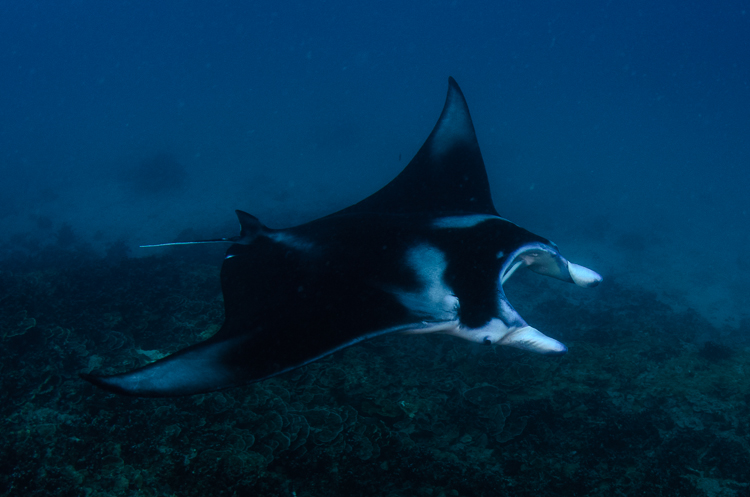
We ended up seeing them on three of our dives. Two of these times we saw numerous individuals and a few good moments with them. One time, there was just a fleeting fly by and I never and tried to raise my camera.
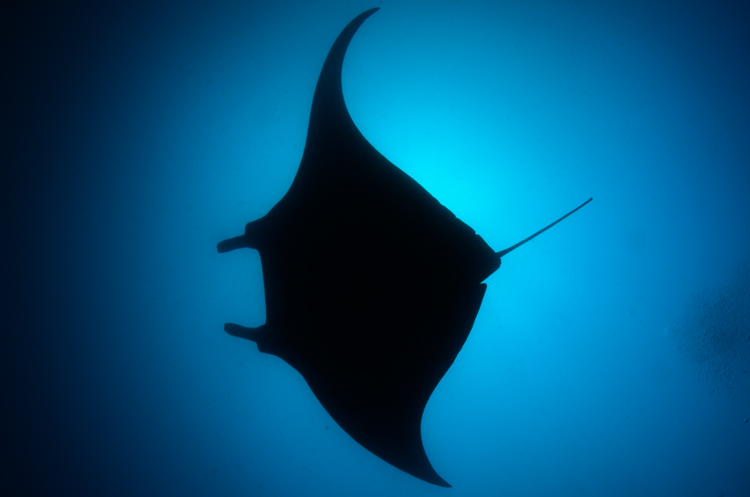
This concludes the wide-angle shooting. Stay tuned for more!
BH
If you want to read the rest: Part I, Part II, Part III and Part IV.

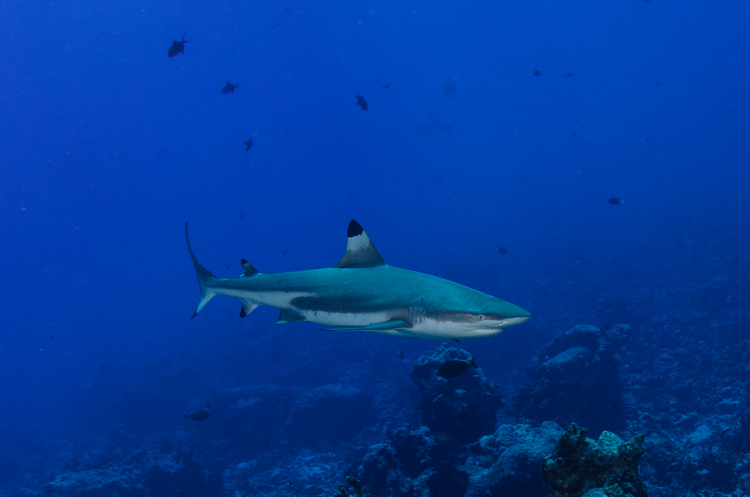
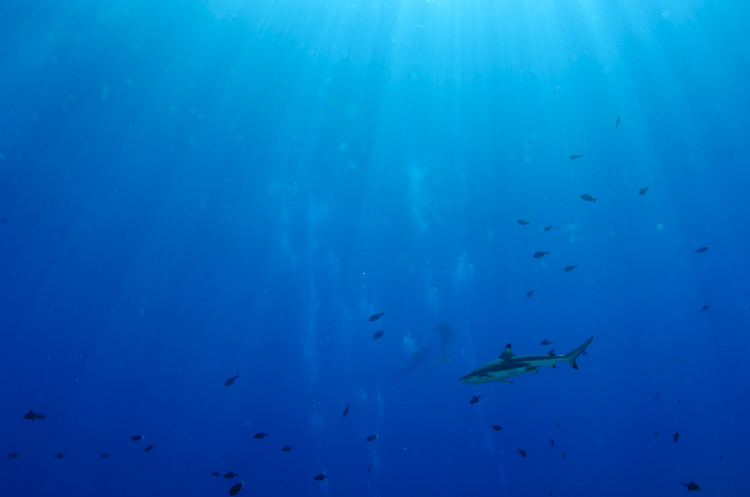
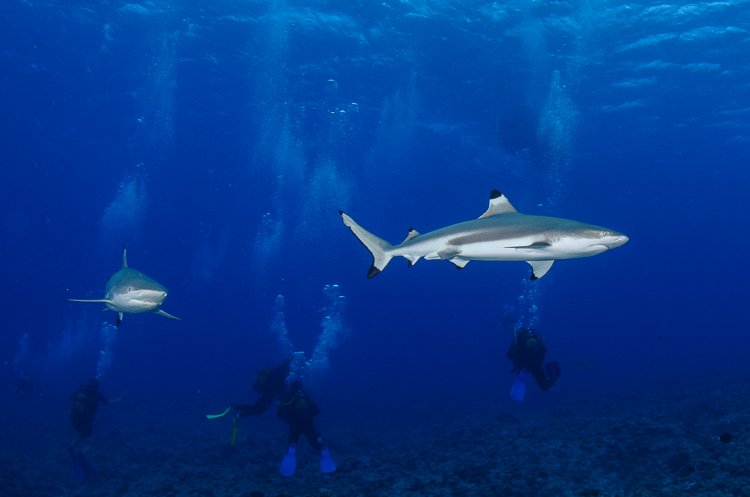
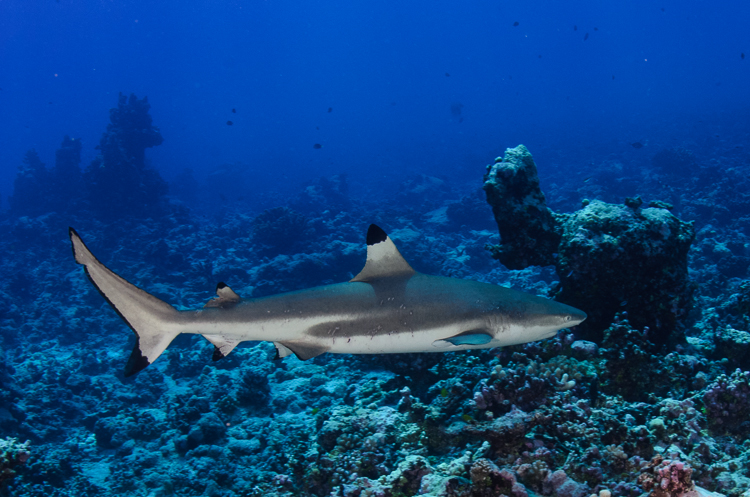
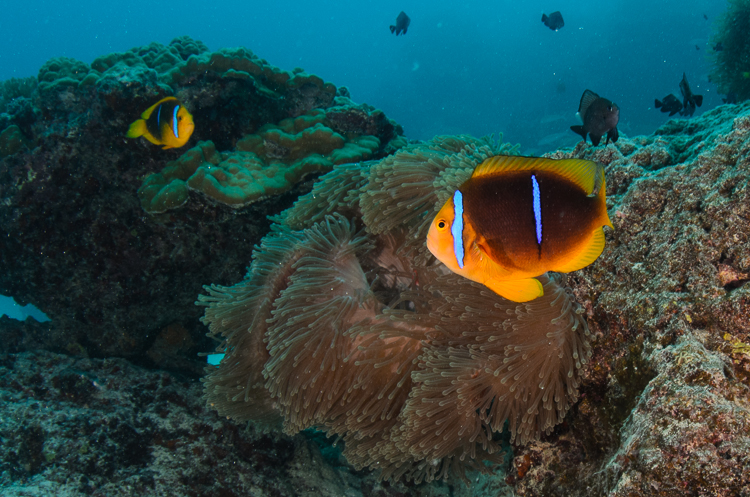
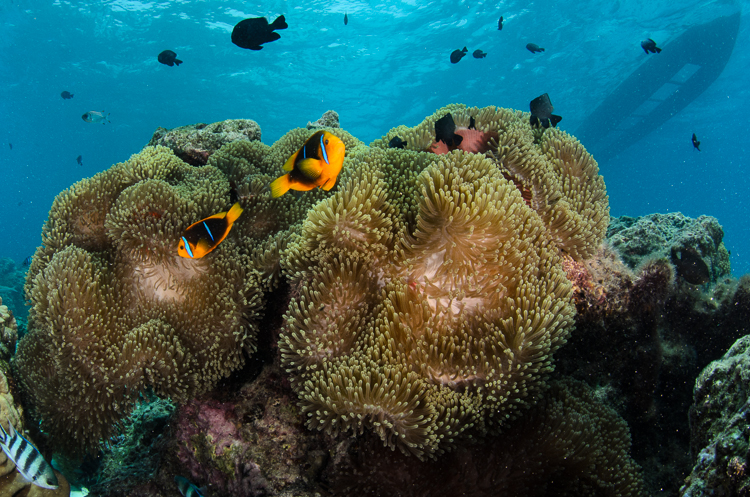
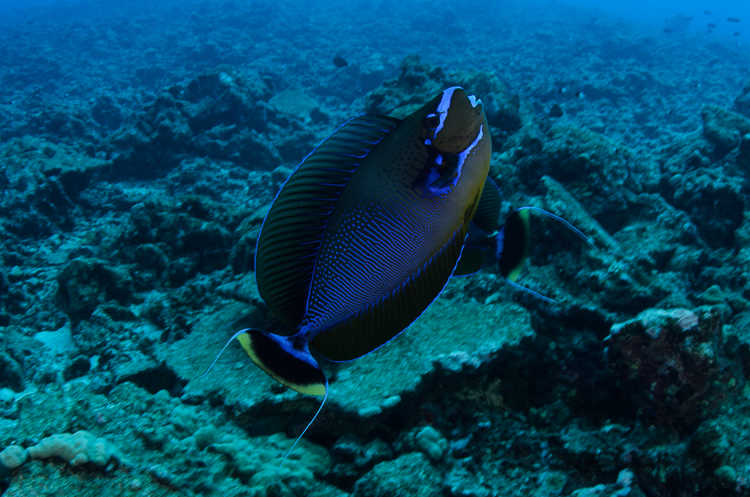
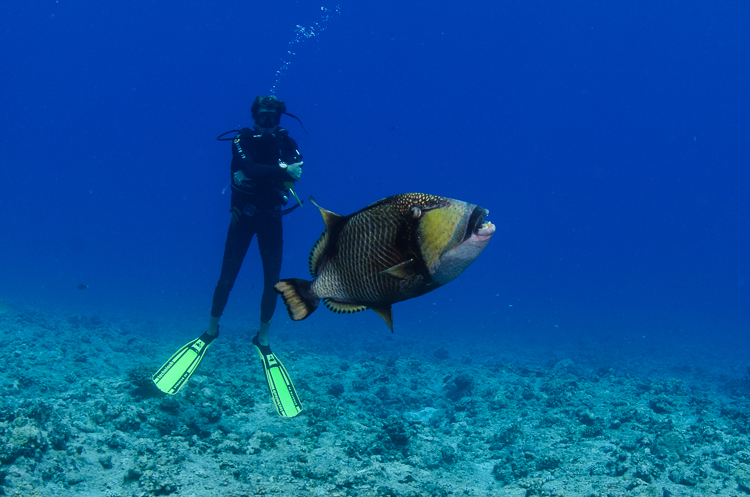
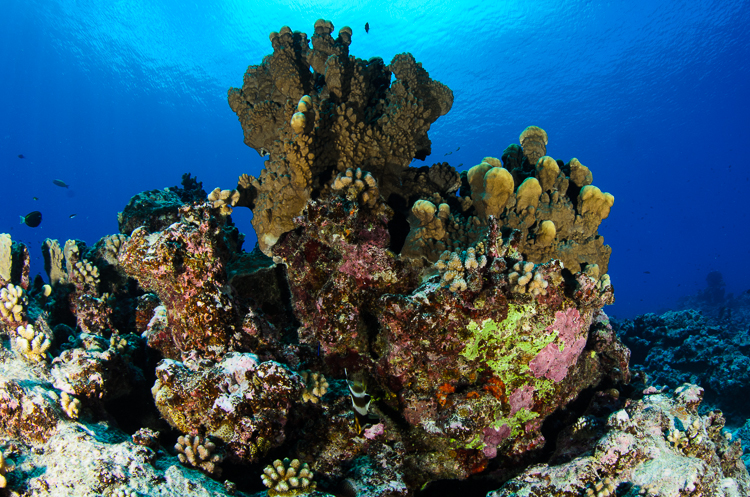
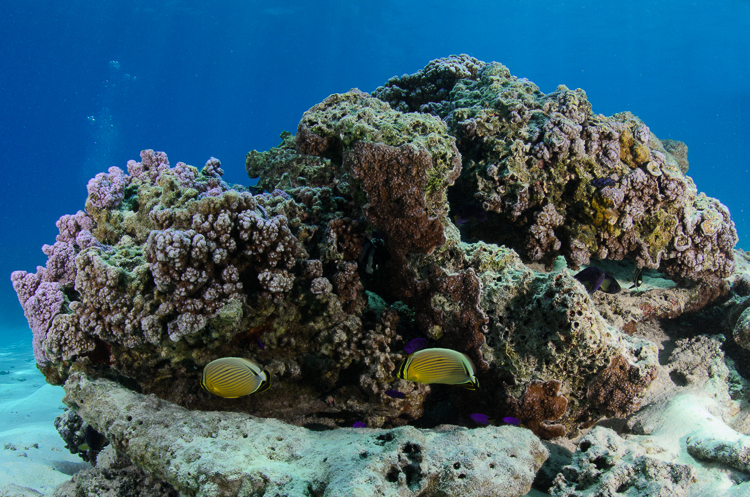
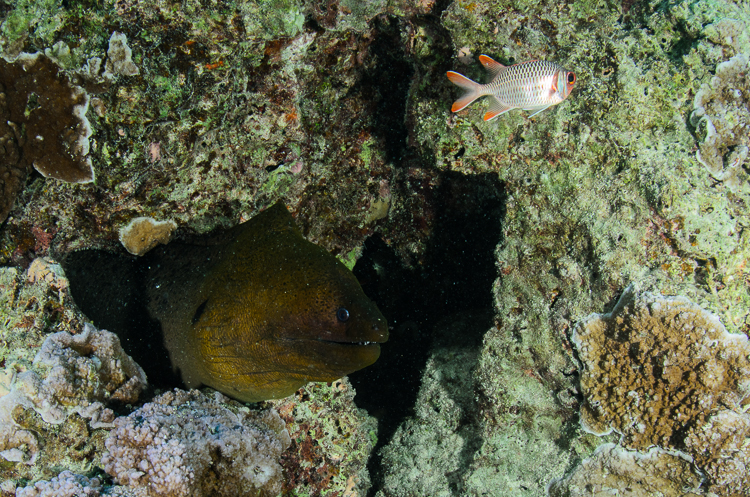
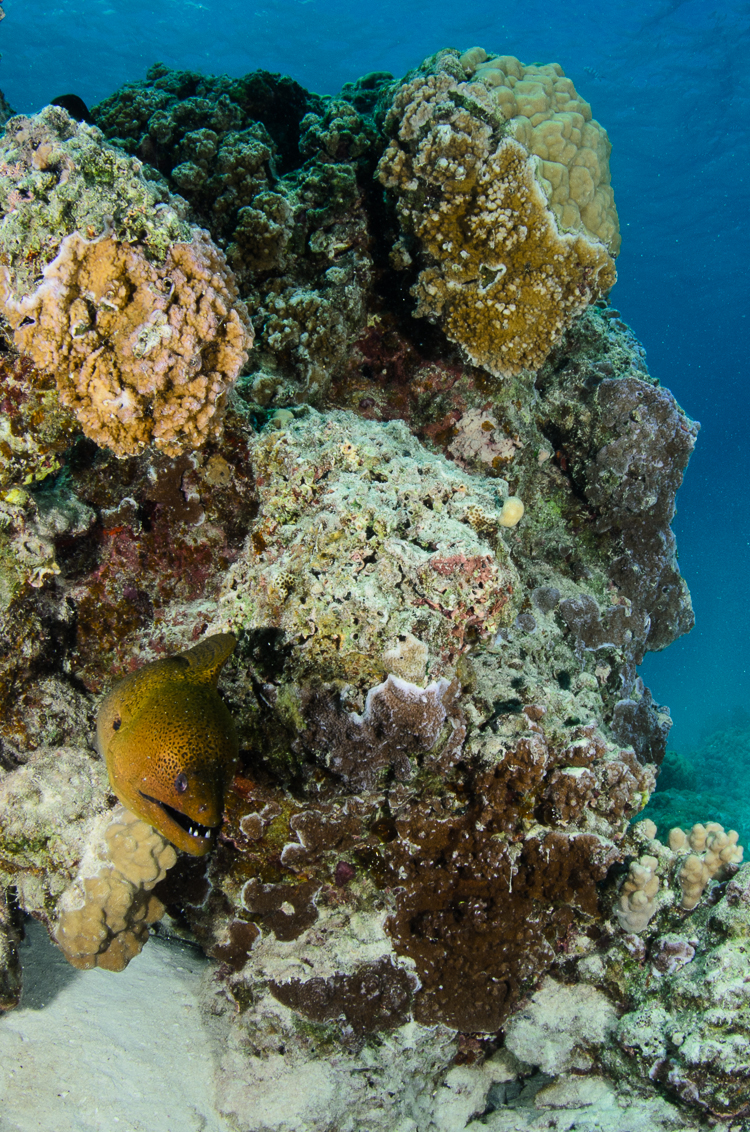
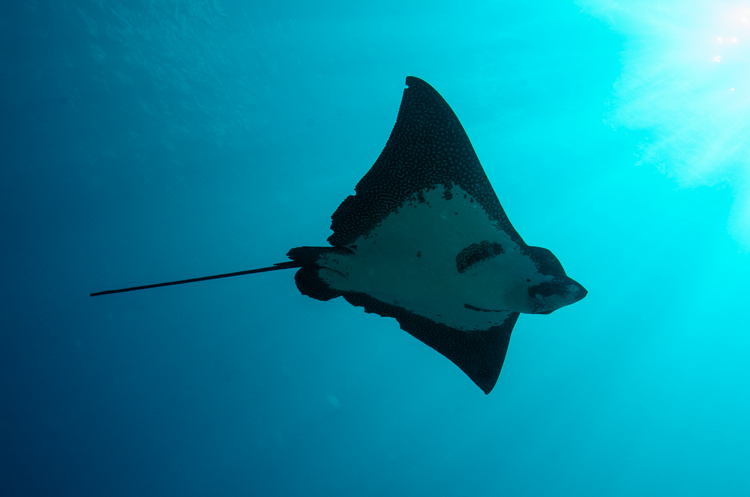
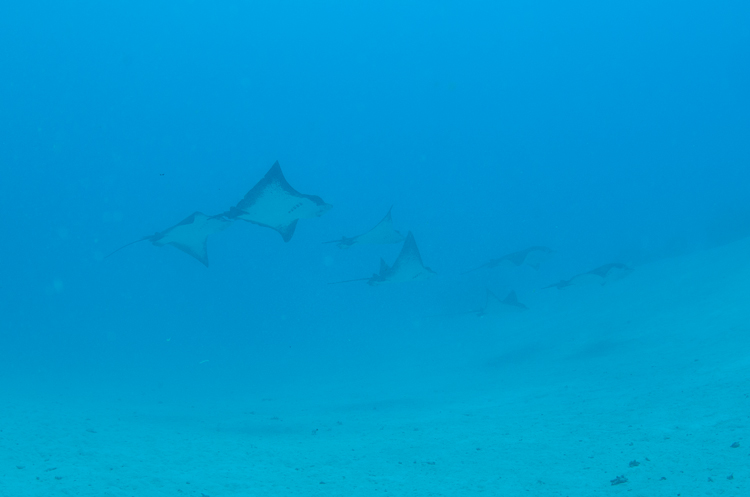
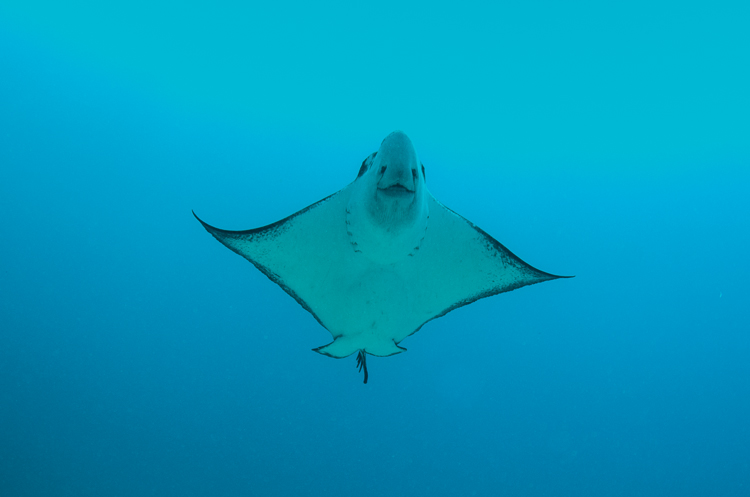
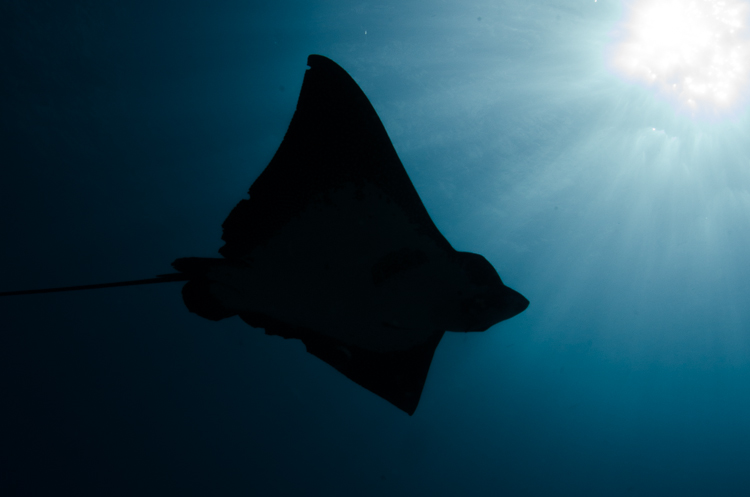
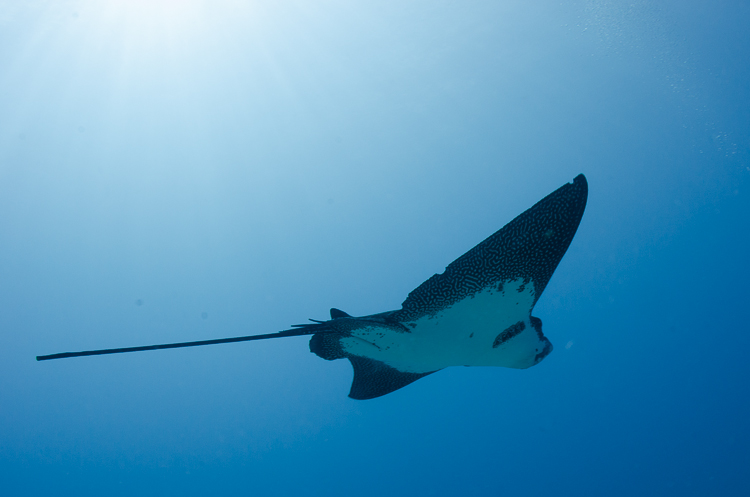

No comments:
Post a Comment